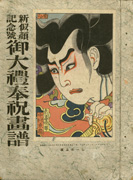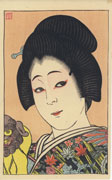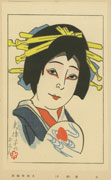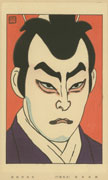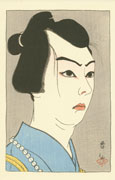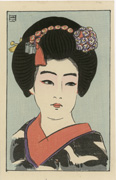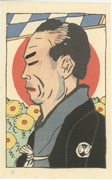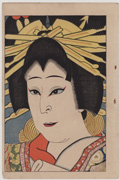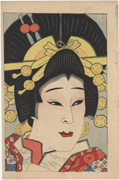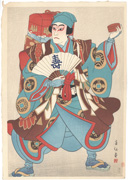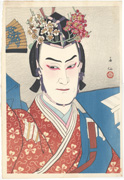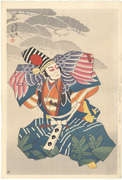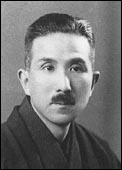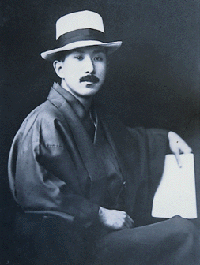Prints in Collection
Kotarō in the role of Yayoi, 1915
IHL Cat. #241Ritsuko in the role of Okon, 1915
IHL Cat. #294Kichiemon in the role of Yura Hyōgo, 1915
IHL Cat. #255
Baikō in the role of Ibara, 1915
IHL Cat. #468Taminosuke in the role of Otsuma, 1915
IHL Cat. #469
Uzaemon in the role of Shirai Gonpachi, 1915
IHL Cat. #490
Gion no Nakako, 1915
IHL Cat. #838Gorō in the role of Kyūzaemon, 1915
IHL Cat. #857
Nakamura Utaemon
in the role of Agemaki, 1915
IHL Cat. #1965
IHL Cat. #2177
-intentionally left blank-
The character Kamata Tetsuya from the novel
The Gold Demon, 1920
IHL Cat. #1624
Biography
Natori Shunsen 名取春仙 (1886-1960)
Source: Hanga Gallery website http://www.hanga.com/bio.cfm?ID=17 and Dramatic Impressions: Japanese Theatre Prints from the Gilbert Luber Collection, Chance, Frank L. & Davis, Julie Nelson, University of Pennsylvania Press, 2007, p. 37-46.
Natori Shunsen, one of the finest designers of actor prints, was born Natori Yoshinosuke, the fifth son of a silk merchant. The family moved to Tokyo after Shunsen's father lost his business. In Tokyo, Shunsen had the opportunity to begin his artistic training. At the age of eleven, he began studying with Kubota Beisen (1852-1906), a Japanese-style (Nihonga) painter. During this time he received his artist's name "Shunsen". He later studied at the Tokyo School of Fine Arts.
In 1909 Shunsen began working at the Tokyo Newspaper, Asahi Shinbun, illustrating the newspaper's literary sections and serialized novels. He worked with many famous authors and developed an interest in depicting literary characters. Illustrating kabuki actors was a natural extension of this work. The kabuki theater was very popular at that time and the stories and characters were well known by the public. In 1915 Shunsen first became involved in designing actor prints. He contributed several print designs to the magazine New Actor Portraits (Shin Nigao-e). Among other artists involved with this project were Yamamura Toyonari (Kōka) (1885-1942) and Torii Kotondo (1900-1976).
While working at the newspaper, Shunsen began to exhibit his paintings of kabuki and literary characters. During an exhibit in 1916, the woodblock publisher Watanabe Shōzaburō happened to see one of Shunsen's actor portraits, Nakamura Ganjiro as Kamiya Jihei. Watanabe was immediately impressed by the work and wanted to employ Shunsen as a print designer for his "new prints" (shin hanga). Shunsen agreed to a collaboration and Watanabe produced two actor prints from his designs in 1916 and 1917.
After 1917 Shunsen decided to pursue other opportunities, though Watanabe probably would have liked to continue their collaboration. However, in 1925 they again worked together. Shunsen had started designing a series of 36 actor portraits for the publisher Kikuchi Yoshimaru. After the first print was completed, Kikuchi decided to turn over the project to Watanabe. This series, Shunsen nigao shū (variously translated as Thirty-six Kabuki Actors Portraits or Portraits of Actors in Various Roles or Collection of Shunsen Portraits) showcased some of Shunsen's finest kabuki designs. Watanabe lavishly produced each print in a limited edition of 150 and sold them only by subscription. The series lasted through 1929, and was followed by a supplement series of 15 actor prints produced through 1931.
Shunsen's actor portraits were mainly in theokubi-e (large head) format which allowed him to focus on the expression and emotions of the character's face. He also designed a few bijin-ga (beautiful women) prints during the late 1920's, both with Watanabe and the publisher Kato Junji. These prints (at least those produced by Watanabe) seem rather flat in comparison to the vibrant kabuki portraits, perhaps because they are not okubi-e.
Shunsen continued to work as an artist in the kabuki theater, but did not design any other actor prints until the early 1950's. From 1951 to 1954, he collaborated with Watanabe on another series of 30 contemporary actor prints, titled Butai no sugata-e (Forms of Actors Onstage.) Like the earlier series, these designs were beautifully printed and are very expressive, especially the okubi-eportraits. However, to some critics, they are not as strikingly original as the first series, echoing the decline of the kabuki theater during that time. While he did not produce any additional prints for Watanabe after this series, he continued to paint, produce drawings for prints and to teach until 1958. Tragically, Shunsen and his wife lost their beloved daughter Yoshiko to pneumonia in 1958. They were unable to recover from their grief and committed double suicide on the family grave in Tokyo.
Signatures and Seals of the Artist (a partial list)

 Shun | 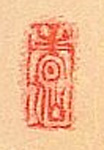 Shunsen | 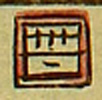 Shun |  春仙筆 / 年玉 Shunsen hitsu / toshidama cartouche |  Shunsen shakaku / toshidama cartouche |  春仙写 Shunsen sha |
 Shunsen / Shunsen seal |  春仙 / unread Shunsen / unread seal |  Shunsen / Bichō seal |  Sunsen / flower pattern seal |  Shunsen ga / Taishidō seal |  Shunsen ga / unread seal |
 春仙画 Shunsen ga / leaf pattern seal |  春仙画 Shunsen ga / flower pattern seal |  春仙 / 春仙 Shunsen / Shunsen seal |  春仙絵 / 名取 Shunsen-e / Natori seal |  春仙 / 名取 Shunsen / Natori seal |  春仙 / unread Shunsen / unread seal |  春仙 / 春 Shunsen / Shun seal |
 春仙画 / 春 仙 Shunsen ga / shun and sen seals |  春仙 / 春仙 Shunsen / Shunsen seal |  春仙 / unread Shunsen / unread seal |  名取春仙画 / unread Natori Shunsen ga / unread seal |  春仙 / 春仙 Shunsen / Shunsen seal |
 黛紫洞春仙画 / unread Taishidō Shunsen ga / unread seal |  梶蔦斎春仙画 / 春 Bichōsai Shunsen ga / Shun seal |  Bichōsai Shunsen ga / Shunsen seal |  梶蔦斎春僊 / 春仙 Bichōsai Shunsen ga / paulownia pattern seal |  黛子洞春仙 / 春仙 Taishidō Shunsen / Shunsen seal | 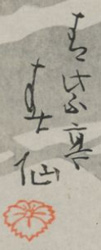 Seishite Shunsen paulownia pattern seal |
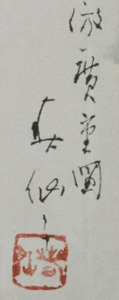 倣広重図春仙 / 春仙 Hiroshige no zu ni naraite Shunsen / Shunsen seal (Shunsen imitating Hiroshige) |  名取 Natori(artist's seal of approval) |  |
Kana taken from website of Japan Arts Council:
黛子洞春仙 ( たいしどうしゅんせん )Taishidō Shunsen
梶蔦斎春仙 (びちょうさいしゅんせん Bichōsai Shunsen
梶蔦斎春僊 ( びちょうさいしゅんせん )Bichōsai Shunsen
倣広重図春仙 ( ひろしげのずにならいてしゅんせん )Hiroshige no zu ni naraite Shunsen
青紫亭春仙 ( せいしていしゅんせん )Seishite Shunsen
Literature
Catalogue Raisonne – Ukiyoe Kabuki Gi Han Ga: Shunsen Natori (The Skill of Natori Shunsen in Kabuki Prints), Kushigata Municipal Shunsen Museum, Kushigata, Japan, 1991
Dramatic Impressions: Japanese Theatre Prints from the Gilbert Luber Collection, Chance, Frank L. & Davis, Julie Nelson, University of Pennsylvania Press, 2007
last revision:
7/28/2020
